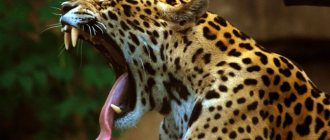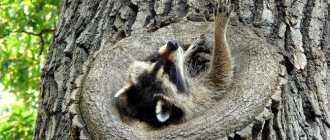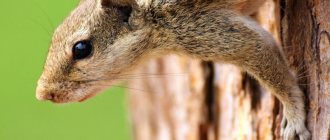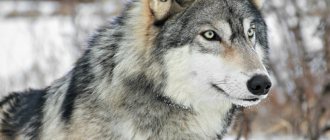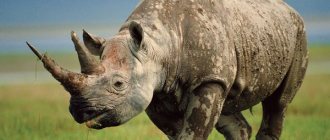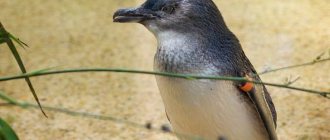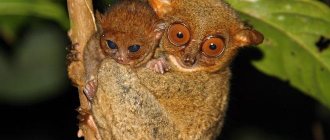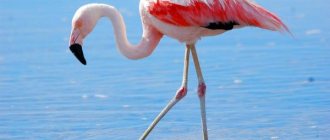- Wild animals
- >>
- Mammals
The African lion is a powerful predator, second only to the tiger in size. Since ancient times, the power of lions has been recognized in the natural animal world. Their images on coats of arms, flags, and sculptures symbolize power and strength. Unfortunately, even the king of nature today needs help; he must be protected from complete destruction by man.
Origin of the species and description
Photo: African lion
The African lion is a large predatory mammal, a prominent representative of the panther genus from the subfamily of big cats. All lions can be roughly divided into Asian and African, while the dimensions of individuals from the latter group are more impressive. This species evolved in Africa about 1 million years ago. Ancient fossils have been found in Italy in Europe, the age of which is estimated at approximately 700,000 years.
Video: African lion
Experts have identified several subspecies of African lions:
- Barbary lions or North African lions are distinguished by their particularly large dimensions, but they are no longer found in the wild, as they were completely exterminated by humans. There are about a hundred Barbary lions in zoos around the world, but they can no longer be called purebred;
- Masai lions, the males of which are characterized by a very long mane;
- The Senegalese lion is the smallest of all African lions; it is this subspecies that is most similar to the Asian species;
- Congolese - lives in Uganda;
- Northwestern African lions are a large subspecies with a very light color;
- Transvaal lion - also distinguished by its impressive dimensions and long paws;
- The genetic differences between African and Asiatic lions are no more significant than the genetic differences between different human races.
Appearance and features
Photo: What an African lion looks like
Representatives of this feline species are characterized by external differences based on gender. Males are distinguished by their larger sizes and long, lush manes, which can grow up to 40 centimeters. In some subspecies, hair grows not only on the head, but also on the neck and chest, sometimes forming one single large mane. Senegalese lions have very sparse and short hair. All lions have a tail decorated with a small tassel, inside of which there is a small curved bone.
The body of lions is muscular and very flexible. Body size and weight depend on the subspecies. The maximum weight that was officially recorded was 370 kg with a body length of more than 3.6 m. The average weight of a male ranges from 180-220 kg, and of a female about 130-150 kg. At the withers, females reach 80-90 cm, and are slightly less than two meters long, excluding the tail. The height of males is about 120-125 cm with a body length of 2.5 meters.
Lions have fairly large eyes that are perfectly adapted to the dark. The jaws of predatory cats are very powerful, motionless to the sides. The large front canines are effective weapons during a lion hunt; they are designed to tear out pieces of flesh. Like all representatives of the cat family, lions never chew their food and swallow pieces whole. The lion's tongue is rough with a special bumpy coating, with the help of which the hunter separates bones from meat while absorbing food, and also catches ticks and fleas while washing.
The coloring of lions may vary slightly depending on the subspecies. There are individuals with both a milky beige color and a light brown body with an almost black mane. There are known cases of albino lions being born.
Now you know what an African lion looks like. Let's see where he lives.
Types of lions with photos and names
Scientists have identified only 8 varieties of the African lion, which have some differences, both in color and size, as well as in other characteristics. Among them there are subspecies that are difficult to distinguish from each other based on individual details known only to specialists who have been studying the life of these unique animals for many years.
Today we know of the existence of:
Cape Lion
Although this subspecies does not exist, since the last individuals were killed back in the 1860s. Its differences were that this animal had a darker and more voluminous mane, and tassels of a dark shade protruded from the tips of its ears. Their habitats extended to regions of southern Africa, as well as the Cape of Good Hope.
Atlas lion
This subspecies can also be traced back to the past, as the last specimen was shot in Morocco in the early 20th century. It was considered the largest of all subspecies, distinguished by darker skin. Its habitat was associated with the African continent, as well as the Atlas Mountains. Roman emperors kept these animals as guards. Many believe that the descendants of this subspecies have survived to this day, although no one has yet been able to prove this.
Indian lion (Asian)
This predator is distinguished by a more squat body, more well-groomed fur, and also a mane. Adult males weigh almost 2 hundred kilograms, and the weight of females does not reach even one hundred kilograms. One of the specimens was included in the Guinness Book of Records, since its body length was almost 3 meters. Nowadays, Indian lions are protected. In the Indian state of Gujarat, a special territory has been allocated for them - a reserve.
Katangese lion from Angola
The predator is distinguished by a lighter color of its body. Adult individuals have a body length from 2 and a half to 3 meters, depending on gender. The predator lives in the province of Katanga, which is why it got its name. It is considered an endangered subspecies because their total numbers are insignificant.
West African lion from Senegal
The males of this subspecies have a rather light and short mane, and there are males without a mane at all. It is also considered an endangered subspecies found in central Africa. It is characterized as a medium-sized subspecies, with the same medium-sized muzzle as that of ordinary lions.
Masai lion
This animal is characterized by its very large size, with a height at the withers of up to 1 meter and a body length of almost 3 meters, while it has longer limbs, and the mane is neatly “combed” back. Their natural habitat extends to the countries of southern Africa, including Kenya, where they are protected from hunters in nature reserves.
Congo lion
Which is similar to the African lion, but lives mainly in the Congo. It is an endangered species, like the Asiatic lion.
Transvaal lion
At one time, it was considered a Kalahari lion, since its external characteristics indicated that it was a fairly large predator with the longest and darkest mane. It is worth noting the fact that some changes have been noted in this subspecies over a long period of time. This was due to the fact that melanin, which is secreted by melanocytes, was not found in the body of these animals. Therefore, their coat is white and their skin is pink. Adults grow from 2.5 to 3 meters in length, depending on gender. Natural habitats are associated with the Kalahara Desert. Several specimens thrive in the Kruger Nature Reserve.
White Lion
Although some experts do not classify it as a separate subspecies, believing that it is a product of genetic abnormalities. These animals suffer from leukemia, which is why their coat color is white, but there are very few of them. They are kept in captivity in the eastern reserve of South Africa.
It is worth paying attention to the “Berbary lions” (Atlas), which are also kept in captivity, although their ancestors once lived in the wild, and their size was somewhat more modest than the modern “Berberians”. As for the rest of the data, they differed little from their modern relatives.
Interesting fact! As far as is known, black lions do not exist at all, since they would not be able to survive in natural conditions. According to some reports, some travelers have seen black lions. Scientists admit the possibility of black lions appearing as a result of crossing different subspecies, but so far no one has been able to prove that black lions really exist.
Where does the African lion live?
Photo: African lion in nature
About 10 thousand years ago, lions, including African lions, were the most numerous mammals after humans. Over two centuries, their habitat has shrunk significantly. If in the early Middle Ages all subspecies of the African lion were found almost everywhere in Africa, except for tropical forests and deserts, today the predators have survived only in sub-Saharan Africa.
African lions live:
- in the western and northwestern parts of the African continent;
- in southeast and eastern Africa.
Interesting fact: The characteristic roar is characteristic of all four species of the cat family, but the lion's is the most terrifying and loud, reaching 115 decibels, which is comparable to the volume of a rock concert. The lion's roar can be heard 10 kilometers away, its vibrations can raise a cloud of dust.
Savannas are the favorite habitats of predatory African cats. Sometimes these predators can move into the forest. Animals always stay close to some body of water, where ungulate mammals come to drink and this is their main place of hunting.
In captivity, African lions do well and give birth quite easily, especially in open enclosures. With proper care and nutrition, they can live up to 20 years, which is significantly longer than in the wild.
Features of life and habitat
When describing any animal, you need to consider not only its appearance. It is also worth finding out how long a lion lives and where it lives.
There are few places where such an animal as a lion lives. In recent years, its distribution area has decreased significantly. Previously, this animal was found not only in Africa and India, as it is now, but also in Iran, Russia, southern Europe and the Middle East. But a significant part of the population was exterminated, and conditions in many areas became unsuitable for their life. Therefore, of all the places where these animals could previously be seen, the lion now lives only in the southern part of the African continent (beyond the Sahara Desert) and in the Indian state of Gujarat. The most suitable for them are savannas, forests or bushes.
Individuals unite in small flocks - prides. A pride consists of 5 or 6 related females, their cubs and a male. In some prides there may be two males if they are brothers. Young males, having reached maturity, leave the pride (they are expelled). They have the opportunity to join another pride or create their own. Some of them lead a solitary life.
What does the African lion eat?
Photo: Predatory African lion
African predators hunt large zebras, wildebeests, African pigs, warthogs, reptiles and a variety of small animals, including rodents and birds. Representatives of the cat family do not hesitate to take prey from other smaller predators and pick up carrion.
Lions prefer to hunt in small groups at dusk and at night. They jump on top of the victim and immediately dig into the throat, trying to knock the prey to the ground as quickly as possible. The hunt ends successfully only in half of the cases. Lions do not run long distances due to their physiological characteristics - they have a very small and weak heart relative to their large muscular body.
Sometimes lions go hungry for several days. Each individual needs at least 7-9 kg of meat per day. They drink water willingly at every opportunity, but if it is not enough, they can do without it for up to 4-5 days, since they obtain the necessary liquid from food. Despite the fact that mainly only females hunt, males consume food first and only then do lionesses and young individuals. The eating process is always very noisy with fighting and growling.
If the prey is very large and strong, the male can join the hunt and help the lionesses. Solitary males, who do not yet have their own pride, go out hunting alone, but due to their impressive mane, it is not as effective as that of females, so they often choose lighter and smaller prey.
Features of character and lifestyle
Photo: African lion from the Red Book
Lionesses live longer than males. Lions are at the peak of their strength between 5 and 10 years of age; after reaching the maximum age of their activity, a very small proportion of males survive. African lions differ from other cats by forming a pride or a separate family group. A pride usually consists of several mature individuals and their offspring. Young lion cubs leave the parental group when they reach sexual maturity. They will become loners until they find a new pride with an old, weak leader, who in a duel will give up his rights to the strong and the young. Some lions remain nomads all their lives.
Pride has its own rules:
- everyone obeys the main male;
- foreign males and grown-up lion cubs are expelled;
- young females remain in the pride;
- males always jealously guard their territory, which is several square kilometers;
- females are the main value of males;
- family ties are the basis of relationships in a pride.
African lions are most active after sunset. When going hunting, females leave a “nanny” with the kittens. During the day, lions mostly rest; males walk around and mark their territory. A male who has his own pride is forced to constantly drive other males away from his females. Fierce fights occur very often. Even if the head of the pride did not die in a fight, but was kicked out, then most likely he is doomed to death either because of the wounds received in the skirmish or because of hunger.
Social structure and reproduction
Photo: African lion cub
Unlike other mammals, lions mate at any time of the year and that is why it is quite common to see a female with cubs of different ages. By the age of 3-4 years, lionesses become capable of bearing offspring. Lions are polygamous and a male can mate with several females from his pride in order to leave as many offspring as possible and pass on his genes.
Pregnancy lasts about four months. As the important period approaches, the female retires to give birth to her cubs. The lioness hides the kittens that are born for six weeks, and only then brings them into the pride.
Usually 3-4 lion cubs are born. At birth they weigh no more than 1.5 kg. Babies open their eyes after 10-11 days, and only after a couple of weeks they begin to walk. The lionesses in a pride give birth almost simultaneously; they all feed the newborn cubs together and take care of them, forming a kind of nursery. Only after a year do the kids join the hunt and learn from the adults. Up to two years old, young males are protected by the main lion, and then they are expelled.
Interesting fact: If the previous head of the lion family was defeated by another male, then the newly arrived lion immediately kills all the cubs so that the females are ready for mating as early as possible. Males kill lionesses very rarely. In the wild, there have been cases when lionesses helped their main male drive away young singles.
Lion breeding
Reproduction in lions is not tied to the time of year, but begins with reaching maturity. Males are considered sexually mature at the age of 6 years and females at the age of 4 years.
Males tend to fight for females. Sometimes these fights are so brutal that the competitor dies.
The duration of pregnancy in these animals is 110 days. Shortly before giving birth, the lioness leaves the pride and hides. She can give birth to 1-4 cubs, whose weight is slightly less than 2 kg. Lion cubs are born blind, and they open their eyes only 7 days after birth. For safety reasons, the mother changes her place of stay several times, carrying her children with her. She hunts and feeds her babies with milk. Training cubs to hunt begins at the age of 1.5 months, at which time the entire family joins the pride. With the beginning of the hunt, lion cubs gradually eat meat, although the period of milk feeding lasts about six months.
Natural enemies of African lions
Photo: Female African lion
Adult African lions have practically no enemies among animals. Sometimes they can be injured while hunting, which is why they lose the opportunity to get food. If a single male was wounded, then most likely he will die of hunger, and if it is a lion from a pride or a lioness, then other members of the family will take care of them. Adult African lions are wary only of large crocodiles, since predatory cats are powerless against them.
Lion cubs quite often die in the mouths of males and are attacked by other predators. Hyenas are capable of killing young lions or wounded and sick adult lions. In prides, epidemics of dangerous diseases sometimes begin that can destroy several individuals or even the entire family at once. The carriers of infection are blood-sucking parasites.
Poaching is the main threat to African lions. They fall into traps set by hunters and are killed with firearms during a safari. Some tourists have a great desire to get a hunting trophy in the form of a lion skin.
Interesting fact: In ancient times, lions were found throughout Europe, the Caucasus, and almost all of Asia. Over time, they were all exterminated by hunters.
Population and species status
Photo: What an African lion looks like
There are currently 50,000 African lions in their natural habitat, and about 2,000 in zoos. The African lion was included in the Red Book by the international convention as an endangered species. The North African subspecies has already been completely exterminated by humans and can only be found in zoos.
According to available data, in the 60s of the last century, about 20 thousand African lions were killed by poachers in the Serengeti Park. Six countries on the African continent allow trophy hunting of these graceful animals. Hunters from all over the world flock to the savannas without thinking about the damage they cause to the lion population.
Despite the fact that lions do not normally hunt people, sometimes human casualties occur. On the African continent, about a hundred people die annually due to the fault of predatory cats; they usually attack sick or old males, for whom other prey becomes inaccessible. This fact additionally provokes an aggressive reaction from the local population towards lion prides and their shooting.
Interesting fact: The size of a pride of African lions is usually 15 individuals including cubs, but can reach up to 40 individuals. Among Asiatic lions, prides are divided into male and female, and sexually mature individuals contact only during the mating season.
Lions and people
Lions have no natural enemies other than humans, who have hunted them for centuries. Lions were once distributed throughout southern Europe and southern Asia east to northern and central India and throughout Africa.
The last lion in Europe died between 80-100 AD. By 1884, the only lions remaining in India were in the Gir forest, where only a dozen remained. They probably became extinct elsewhere in southern Asia, such as Iran and Iraq, shortly after 1884. Since the early 20th century, Asiatic lions have been protected by local laws, and their numbers have increased steadily over the years.
Lions have been wiped out in northern Africa. Between 1993 and 2015, lion numbers fell by half in Central and West Africa. In southern Africa the population remains stable and has even increased. Lions live in remote areas that are not inhabited by humans. The spread of agriculture and the increase in human settlements in former lion territories are the causes of the deaths.
